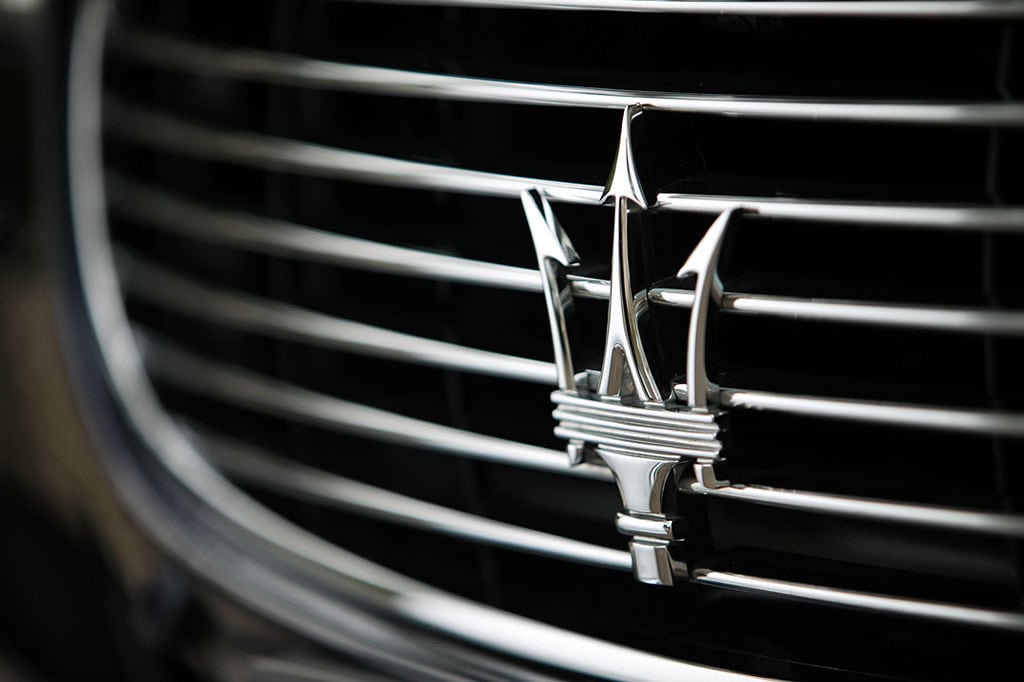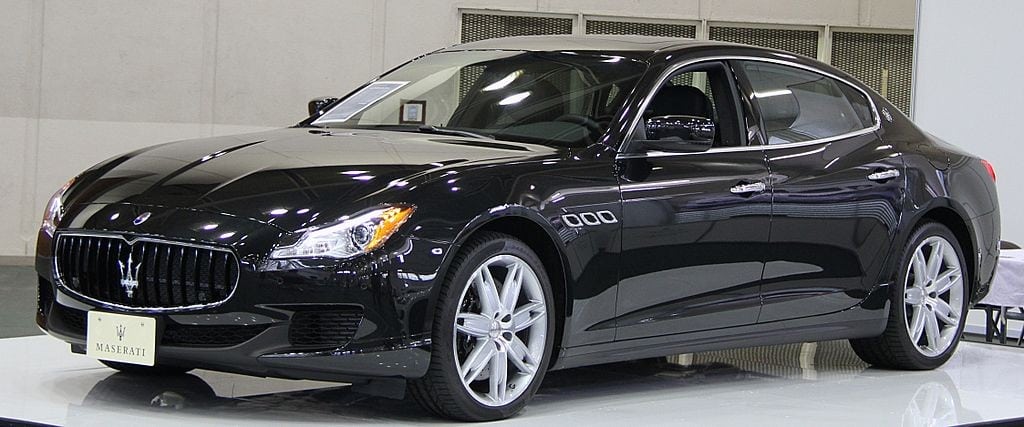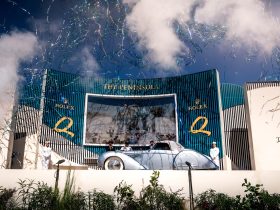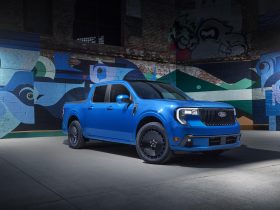The Maserati Trident has graced many beautiful cars on both the race track and the streets of the world. Today we’re going to round up the best devil’s dozen of the street cars Maserati has produced.
From start to finish, here’s our top 12 most awesome Maserati street machines.
Maserati A6
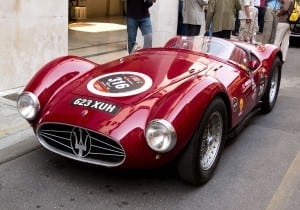 This is the car that started it all, the first street-legal vehicles the Maserati brothers had ever produced. Several vehicles held the moniker “A6”, which itself came from a combination of Alfieri Maserati, the brother most behind their design, and the straight-six engine they employed. Most believe that the A6 1500, shown at the Geneva show in 1947, was the true first of these cars, though some contention could be made towards the Tipo 6CS/46 prototype that came before it. Really, though, the A6 GCS two-seater race car was the most influential of the A6 group as it began the Maserati trek towards sporting road cars and featured a larger, more powerful version of the straight-six engine, a 2-liter producing 120 bhp (roughly twice the A6 1500’s output).
This is the car that started it all, the first street-legal vehicles the Maserati brothers had ever produced. Several vehicles held the moniker “A6”, which itself came from a combination of Alfieri Maserati, the brother most behind their design, and the straight-six engine they employed. Most believe that the A6 1500, shown at the Geneva show in 1947, was the true first of these cars, though some contention could be made towards the Tipo 6CS/46 prototype that came before it. Really, though, the A6 GCS two-seater race car was the most influential of the A6 group as it began the Maserati trek towards sporting road cars and featured a larger, more powerful version of the straight-six engine, a 2-liter producing 120 bhp (roughly twice the A6 1500’s output).
Road-going cars in the A-line were most popularly the A6G two-door coupes and spyders designed by most of the famous European design firms of the time: Pininfarina, Ghia, Vignale, etc. The “G” designation meant “Ghisa,” denoting a cast iron engine block.
Maserati 3500 GT
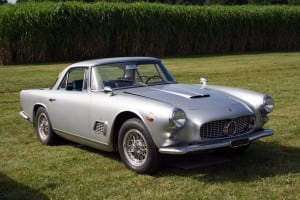 In many ways for the company, the 3500 GT was the car that really started it all. The first series production vehicle that had market success, the Maserati 3500 GT coupe and convertible were grand touring cars in every sense. The first entered the market in 1957 and the series was produced until 1964.
In many ways for the company, the 3500 GT was the car that really started it all. The first series production vehicle that had market success, the Maserati 3500 GT coupe and convertible were grand touring cars in every sense. The first entered the market in 1957 and the series was produced until 1964.
Through the 1950s, Maserati had won success on the race track and had perfected its inline six-cylinder engine in the process. Guilio Alfieri, chief engineer at the company, had begun designing an all-new 3.5-liter engine meant for the Maserati 350S as an endurance racing engine. It was ready in 1955 and modified for road car use. British parts were sourced for accessories as Italian suppliers were few and far between in the decades after the war. The final design of the car was undertaken by Carrozzeria Touring. Eighteen cars were built for the 1957 model year and a total of 2,226 had been built when production ended in 1964.
Maserati 5000 GT
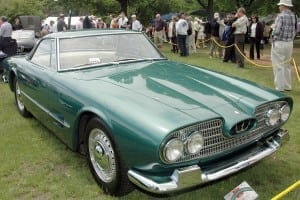 The 5000 GT was first built in 1959 as a commission from the Shah of Persia, who had been impressed with the Maserati 3500 GT and wished to have the car with the five-liter engine from the 450S racer. Carrozzeria Touring developed an aluminum body and two were made, one for the Shah and the other for show at the Salone dell’automobile di Torino in 1959. Both cars were dubbed the Shah of Persia.
The 5000 GT was first built in 1959 as a commission from the Shah of Persia, who had been impressed with the Maserati 3500 GT and wished to have the car with the five-liter engine from the 450S racer. Carrozzeria Touring developed an aluminum body and two were made, one for the Shah and the other for show at the Salone dell’automobile di Torino in 1959. Both cars were dubbed the Shah of Persia.
The idea proved popular and Maserati set out to make a limited production version of the car. Carrozzeria Allemano was commissioned to design and build a new body for the car and 22 of those were ultimately made. Pininfarina made a one-off version, as did Ghia and several others to include Bertone. A total of 34 cars in the 5000 GT line were made before its retirement in 1965.
Maserati Mistral
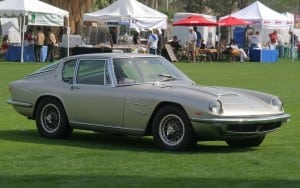 After the 3500 GT was retired, a replacement was introduced as the Mistral. Still designated as a grand tourer and remaining a two-seat coupe or convertible, the Mistral entered the market in 1963 and was built for seven years. It also marked the first Maserati to be named after a famous wind, this one a northerly wind in southern France.
After the 3500 GT was retired, a replacement was introduced as the Mistral. Still designated as a grand tourer and remaining a two-seat coupe or convertible, the Mistral entered the market in 1963 and was built for seven years. It also marked the first Maserati to be named after a famous wind, this one a northerly wind in southern France.
The first of the Mistrals continued with the 3500’s engine, then a 3700cc was used and finally a 4000cc engine was introduced. Both aluminum and steel bodies were used, depending on the year. In total, 1,828 coupe models were made and 125 spyder models built.
Maserati Quattroporte
Although we think of the Quattroporte as a mainstay, modern Maserati, it was actually first introduced in 1963. The name has been used on several models of Maserati make, all having one thing in common: four doors. The name is, after all, simply “four doors” in Italian.
The first-generation Quattroporte was a saloon powered by a 4.1-liter V8 engine and designed by Pietro Frua based on the Shah of Persia 5000 GT. Production began in 1964 and ran through 1966. That year, updates to the model were made to bring both the U.S. and European versions in-line in terms of body design and a new 4.7L V8 was introduced alongside the 4.1. Of the first series, 230 units were made in total and of the second, 776.
Two one-off models were introduced in 1971 and 1974 for show, the second of which was sold to the Aga Khan. Then in 1974, a new series of Quattroporte (often referred to as Quattroporte II) was introduced. This second-generation premiered in 1974 and went into production for the following year. Based on a Citroen chassis, the car was relatively inexpensive in comparison to other Maserati models and was largely sold in the Middle East. It featured a front-wheel drive layout, a body design by Bertone, and a 3.0-liter V6 engine. The car was not sold in Europe due to its inability to make emissions requirements. A V8 model was tested and approved for production, but the Citroen/Maserati bankruptcy in 1975 meant it was never made. Only 13 Quattroporte II models were made, all to order.
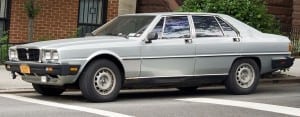 In 1979, after Maserati had emerged from bankruptcy with new ownership, the Quattroporte III was introduced. This was again a rear-wheel drive sedan with a big V8 under the hood. Styling was by Giorgetto Giugiaro and two engines were offered. Production ended in 1990 with 2,155 third-generation Quattroportes being built, including 53 special Royale editions.
In 1979, after Maserati had emerged from bankruptcy with new ownership, the Quattroporte III was introduced. This was again a rear-wheel drive sedan with a big V8 under the hood. Styling was by Giorgetto Giugiaro and two engines were offered. Production ended in 1990 with 2,155 third-generation Quattroportes being built, including 53 special Royale editions.
A few years later, in 1994, the fourth-generation Quattroporte entered production. Based on the Biturbo sedan, it was stretched to become a four-door and utilized the twin-turbo engine from that car as well. A smaller 2.0-liter version was also offered, to appease Italian tax laws. Production of the Quattroporte IV ended in 2001.
In 2003, the Quattroporte V entered the market as a totally renewed sedan. Pininfarina designed this beauty on a completely new platform. That platform eventually became the underpinnings for the GranTurismo and its Cabrio option. The car was an immense success for the company with over 5,000 units built in just one year. Two Ferrari-collaboration engines were used, a 4.2-liter and a 4.7-liter. After a refresh in 2009, the Quattroporte V continued production until 2012.
The following year, 2013, the sixth-generation of the car was introduced. This is the current Quattroporte, with a far longer wheelbase and much more modern underpinnings. Exterior design is similar to the fifth-gen Quattroporte, but engine options changed dramatically to reflect the more economy-conscious and performance-oriented buyer of today. A twin-turbo 3.0L V6, a twin-turbo 3.8L V8, and a 3.0-liter turbodiesel power today’s Quattroporte VI.
Maserati Bora
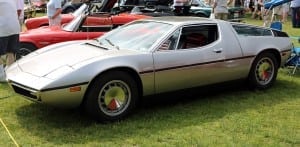 Introduced in 1971, this was the first production mid-engine car from Maserati. The Bora was powered by a V8 engine and capable of 171 miles per hour and is considered one of the iconic supercars of its day. Two versions of the car were made, starting with the Bora 4.7 in 1971, which was offered until the Bora’s production end in 1978. The other was the Bora 4.9, offered from 1974 to 1978. The two were roughly equal in production, with the 4.7 seeing 289 units made and the 4.9 having 275.
Introduced in 1971, this was the first production mid-engine car from Maserati. The Bora was powered by a V8 engine and capable of 171 miles per hour and is considered one of the iconic supercars of its day. Two versions of the car were made, starting with the Bora 4.7 in 1971, which was offered until the Bora’s production end in 1978. The other was the Bora 4.9, offered from 1974 to 1978. The two were roughly equal in production, with the 4.7 seeing 289 units made and the 4.9 having 275.
The Maserati Bora was proposed after Citroen took a controlling stake in Maserati as a way to compete with the newly-emerging supercars from Ferrari and Miura. At the time, the Maserati Bora was the most innovative car the company had ever built.
Maserati Ghibli
Three generations of very different design style all bear the Maserati Ghibli name. The first, introduced in 1966, is a grand tourer in a fastback body style and powered by a V8. Ghibli is the name of a desert wind in Sirocco (Libya).
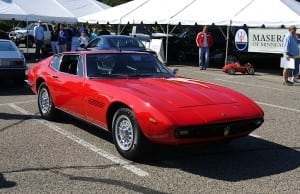 The first-generation Ghibli was produced from 1967 to 1973 as a 2+2 coupe. Designed at Ghia, the bodywork was shark-like with a now-iconic fastback bulge at the rear. A 4.7-liter V8 powered the car from 0-60 in about 6.8 seconds. A spyder version was introduced in 1969, as was a more powerful 4.9L engine. The latter meant that the Ghibli coupe could reach speeds of 174 mph; the fastest any street-legal Maserati had ever gone before. 1,295 units of the first-generation Ghibli were made, 125 of which were spyders. This Ghibli was replaced by the Khamsin (below).
The first-generation Ghibli was produced from 1967 to 1973 as a 2+2 coupe. Designed at Ghia, the bodywork was shark-like with a now-iconic fastback bulge at the rear. A 4.7-liter V8 powered the car from 0-60 in about 6.8 seconds. A spyder version was introduced in 1969, as was a more powerful 4.9L engine. The latter meant that the Ghibli coupe could reach speeds of 174 mph; the fastest any street-legal Maserati had ever gone before. 1,295 units of the first-generation Ghibli were made, 125 of which were spyders. This Ghibli was replaced by the Khamsin (below).
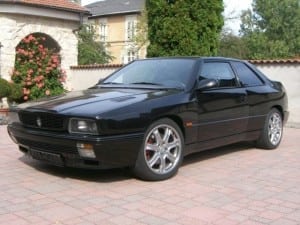 The second-generation Ghibli was introduced in 1992 as a very different design. This two-door, four-seat coupe was powered by a V6 engine as a new replacement for the Biturbo coupes. The design was more contemporary for the period, with a blocky front end and squared-off rear deck. European versions used a twin-turbo 2.0-liter V6 while exports used a 2.8L V6 with more output. In 1996, a semi-new generation called the Ghibli GT was introduced. Production of the second-generation Maserati Ghibli ended in 1998. Several special editions and one-offs of the Ghibli were produced during this period. This car also sparked the now-infamous Ghibli Open Cup, which ran for two years with 25 specially-made Ghiblis of this generation.
The second-generation Ghibli was introduced in 1992 as a very different design. This two-door, four-seat coupe was powered by a V6 engine as a new replacement for the Biturbo coupes. The design was more contemporary for the period, with a blocky front end and squared-off rear deck. European versions used a twin-turbo 2.0-liter V6 while exports used a 2.8L V6 with more output. In 1996, a semi-new generation called the Ghibli GT was introduced. Production of the second-generation Maserati Ghibli ended in 1998. Several special editions and one-offs of the Ghibli were produced during this period. This car also sparked the now-infamous Ghibli Open Cup, which ran for two years with 25 specially-made Ghiblis of this generation.
In 2013, another generation of the Ghibli was introduced. This time, it is a four-door sedan offered with any of three engines and an eight-speed automatic transmission. All three engines are 3.0-liter V6 models, one twin-turbocharged to 330 hp, the other to 400 hp, and a diesel variant producing 271 hp.
Maserati Indy
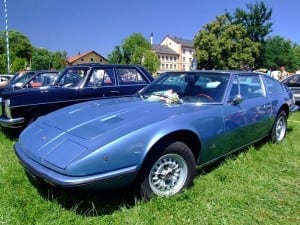 The Indy entered the market in 1969 as a four-seat fastback grand touring car and was produced until 1975. The Indy sat alongside the similarly-designed Ghibli of the time and replaced the Sebring and Quattroporte of the period. The coachwork was designed by Vignale and utilized a 4.2-liter V8. In 1970, a 4.7-liter version, designated the Indy 4700, was introduced alongisde the “4200” model. In 1972, a 4.9L V8 was added as well. A total of 1,104 Maserati Indy cars were made, 440 of which were 4200s, 364 4700s, and 300 as 4900 models.
The Indy entered the market in 1969 as a four-seat fastback grand touring car and was produced until 1975. The Indy sat alongside the similarly-designed Ghibli of the time and replaced the Sebring and Quattroporte of the period. The coachwork was designed by Vignale and utilized a 4.2-liter V8. In 1970, a 4.7-liter version, designated the Indy 4700, was introduced alongisde the “4200” model. In 1972, a 4.9L V8 was added as well. A total of 1,104 Maserati Indy cars were made, 440 of which were 4200s, 364 4700s, and 300 as 4900 models.
Maserati Khamsin
As with many luxury sports car makers in Europe, the 1970s were a heyday of sorts. For Maserati, some of their most timeless classics were produced during this period and in quantities large enough that they were noticed on the world stage so that they would become collectibles. Had Maserati not thrived in the 1970s, it’s very likely they would now be just another footnote in automotive history. As it is, one of their most sought-after cars of that period and one of the most expensive to collect is the Khamsin.
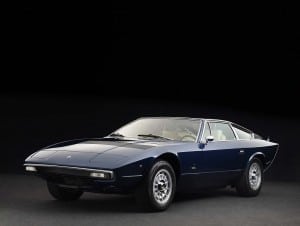 Named for a desert wind of Egypt, the Maserati Khamsin was produced from 1974 to 1982 as a front-engined grand touring car meant to compete directly with the European sport tourers of the day. Designed by Bertone as a classic wedge, the Khamsin was powered by a 4.9-liter V8, carried over from the second-generation Ghibli the car was designed to replace. This engine produced 320 bhp and a massive 355 pound-feet of torque. It was set so far back under that saloon hood that the car had weight distribution similar to a mid-engined supercar and enough room up front that the spare tire was mounted there rather than in the boot. A five-speed manual gearbox or three-speed automatic were offered, both of which propelled the Khamsin from the rear wheels.
Named for a desert wind of Egypt, the Maserati Khamsin was produced from 1974 to 1982 as a front-engined grand touring car meant to compete directly with the European sport tourers of the day. Designed by Bertone as a classic wedge, the Khamsin was powered by a 4.9-liter V8, carried over from the second-generation Ghibli the car was designed to replace. This engine produced 320 bhp and a massive 355 pound-feet of torque. It was set so far back under that saloon hood that the car had weight distribution similar to a mid-engined supercar and enough room up front that the spare tire was mounted there rather than in the boot. A five-speed manual gearbox or three-speed automatic were offered, both of which propelled the Khamsin from the rear wheels.
Innovations in the Khamsin were largely found in the steering, which used the speed-sensitive variable assist that Citroen (parent company of Maserati) had developed. Disc brakes were also found on all four wheels as was one of the few adjustable steering columns of the period.
Sadly, as with many European cars of the time, the U.S. version was hacked up in order to meet federal regulations for bumper and light placements making the Americanized versions of the Khamsin far less appealing.
Maserati Biturbo
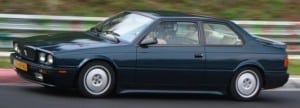 Often cited as one of the ugliest Maserati designs ever made, the Biturbo was introduced in 1981 and became one of the longest-lived and best-selling of the firm’s automobiles. Running until 1994, the Biturbo was a two-dour, four-seat coupe. It lacked much of the flair and appeal of previous Maserati cars and was meant to compete with the BMW 3-Series and similar designs of the period. As its name implies, it was powered by a twin-turbo V6.
Often cited as one of the ugliest Maserati designs ever made, the Biturbo was introduced in 1981 and became one of the longest-lived and best-selling of the firm’s automobiles. Running until 1994, the Biturbo was a two-dour, four-seat coupe. It lacked much of the flair and appeal of previous Maserati cars and was meant to compete with the BMW 3-Series and similar designs of the period. As its name implies, it was powered by a twin-turbo V6.
By the time the production run for the Biturbo ended, several variants and editions had been built, including the popular Racing, the now rare Spyder, and larger grand touring versions. The architecture of the Biturbo was also used in several vehicles including the second-generation revival of the Ghibli and Barchetta. The Barchetta went on to become one of the most collectible Maseratis of this late period.
In all, three style generations for the Biturbo were made and three different engines were used (all twin-turbo V6s). Despite near universal disdain for the car by the automotive press and commentators, the Biturbo sold well for the company, with many versions breaking into four-digit production numbers – a rarity for Maserati even today.
Maserati MC12
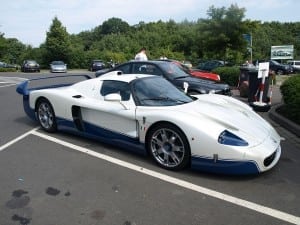 Only fifty of this car were made, half in 2004 and the other half in 2005. The Maserati MC12 was created for one purpose and one purpose only: to make the racing version of the car homologous for the GT Championship per FIA rules. Maserati was ready to end their 37 year absence from racing and FIA required at least 25 cars be produced in order to qualify as a GT. The race version was called the GT1 and it had excellent results on the track.
Only fifty of this car were made, half in 2004 and the other half in 2005. The Maserati MC12 was created for one purpose and one purpose only: to make the racing version of the car homologous for the GT Championship per FIA rules. Maserati was ready to end their 37 year absence from racing and FIA required at least 25 cars be produced in order to qualify as a GT. The race version was called the GT1 and it had excellent results on the track.
A mid-engined sports car, the MC12 was based on the Enzo Ferrari, but only those who stripped it down to its chassis would know that. The MC12 is larger and prettier than the Ferrari. All fifty of the cars made were pre-sold before production. The MC12 is made to press its weight distribution to the rear as it gains speed, building traction. On the curb, the Maserati has a 41%:59% front:rear distribution, but at about 200 km/h, that has changed to 34:66.
Exterior differences between the racing GT1 and the street-going MC12 are minimal.
Maserati GranTurismo
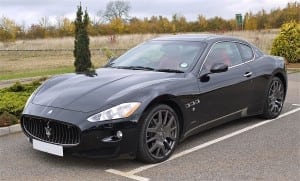 Entering production in 2007, the GranTurismo continues today, sharing the platform of the Quattroporte (now in its fifth-generation). The GranTurismo is a two-door coupe with four seats and a number of variants. Both a 4.2-liter and 4.7-liter engine are offered along with a six-speed automatic or semi-automatic transmission. A cabriolet version (GranCabrio) was introduced in 2010.
Entering production in 2007, the GranTurismo continues today, sharing the platform of the Quattroporte (now in its fifth-generation). The GranTurismo is a two-door coupe with four seats and a number of variants. Both a 4.2-liter and 4.7-liter engine are offered along with a six-speed automatic or semi-automatic transmission. A cabriolet version (GranCabrio) was introduced in 2010.
The GranTurismo is a smaller version of the four-door Quattroporte. The automatic transmission imparts a 49:51 weight distribution (front:rear) whereas the sequential semi-automatic manual has further rear bias with the gearbox mounted near the rear axle, resulting in a 47:53 split.
Everything about the GranTurismo is designed to turn heads and the car is a regular at Concours and dealer shows globally. It’s the perfect cap to our Devil’s Dozen list of cars produced under the Trident.
Photos from Wikimedia.


